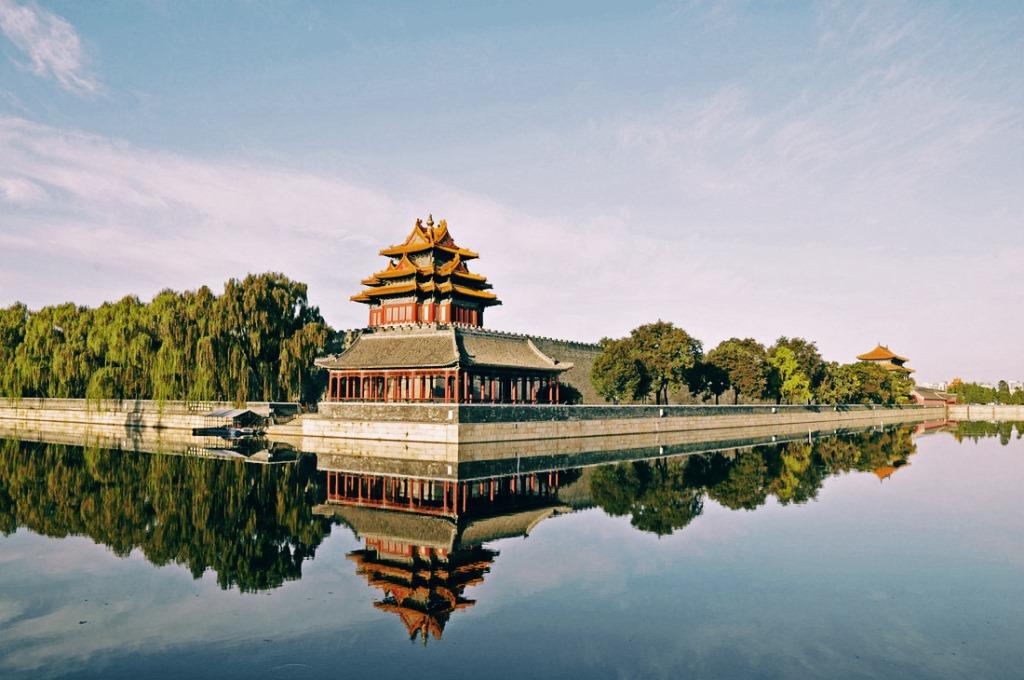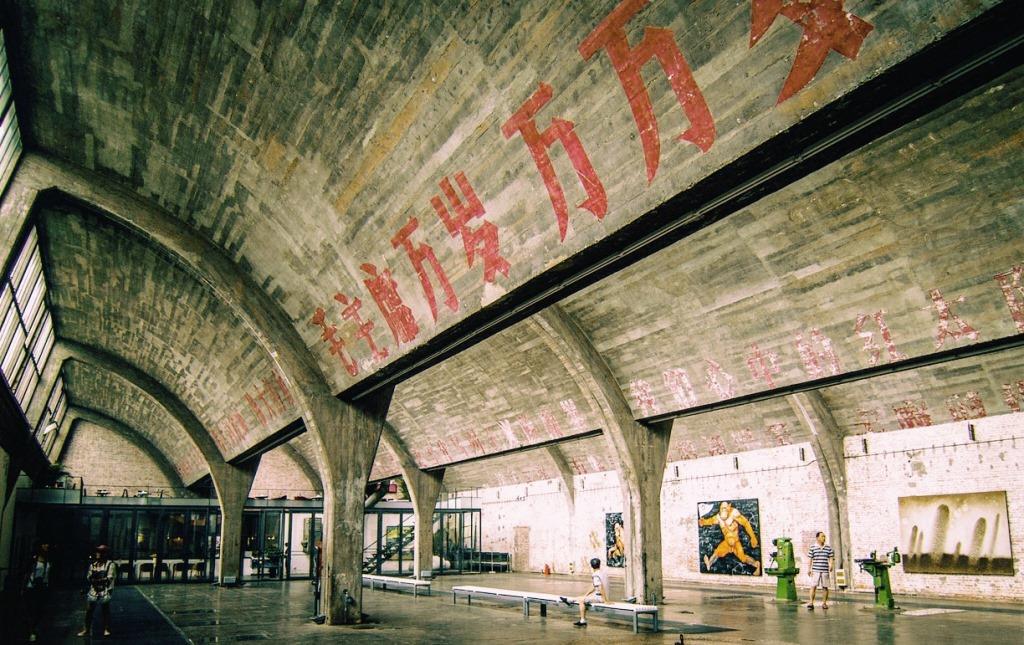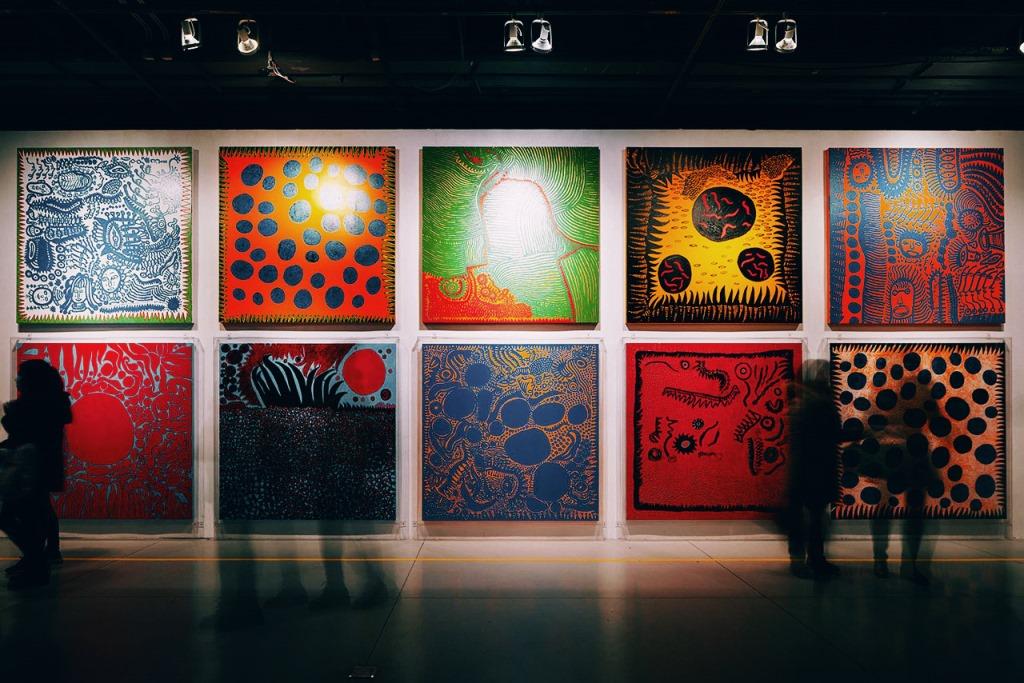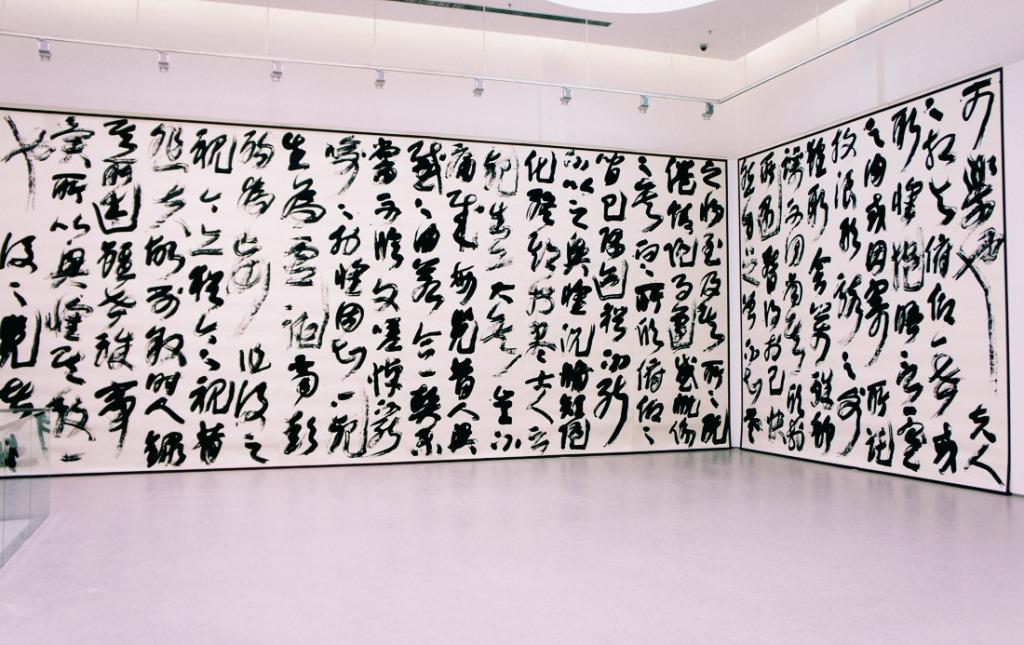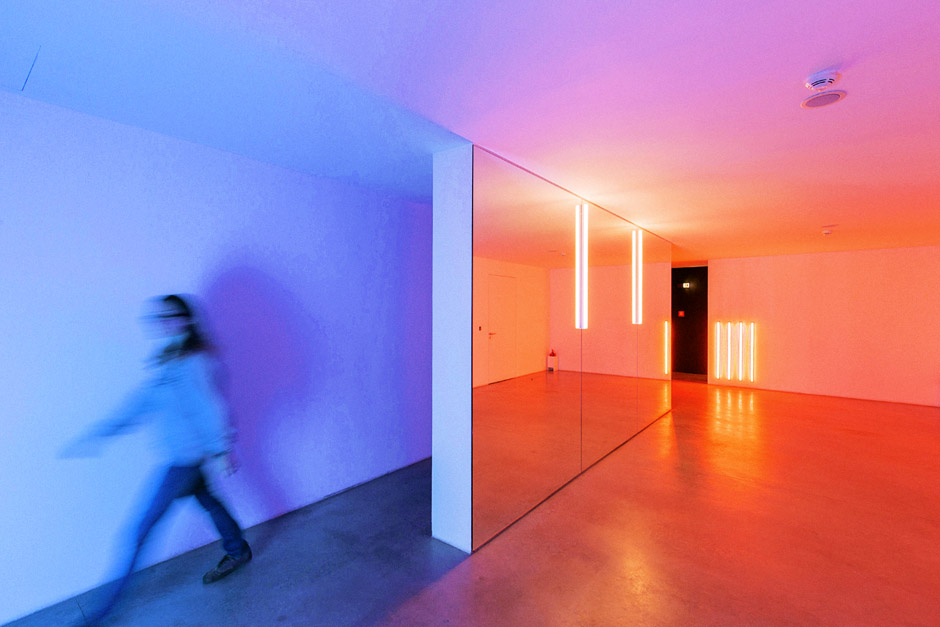Top museums in China: In China, you can find museum institutions for every taste: from ancient Chinese ceramics to super-technological installations about the Universe and the world around it. Chinese art is unique and special, and in these museums, you will surely learn to #see more. We tell you about the main must-see in our guide.
Forbidden City in Beijing

Top museums in China
A place, for trying to get into which a little more than 100 years ago you would have been subjected to a long and painful execution. For five centuries, the largest palace complex in the world kept its secrets and was inaccessible to mere mortals. It was built in 1406-1420 during the reign of Zhu Di. Zijingcheng, which means the Purple Forbidden City, became the residence of 24 emperors from the Ming and Qing dynasties for 500 years. After the last Chinese emperor Pu Yi abdicated the throne in 1912, but finally left the Forbidden City only in 1925, the palace complex became known as Gugong – a former palace. In the same year, a museum was organized in the Forbidden City. According to legend, the museum has 9999.5 rooms, but in fact, there are 8707, which, you must admit, is also a lot. Unfortunately, most of the viewing rooms are closed and some of them can only be viewed through a fence through a slightly open door or even through glass.
The rooms of the palace that are accessible for viewing are huge empty halls, the vaults of the ceilings of which are supported by elaborately decorated columns. But on the website of the museum, there is an opportunity to make interactive excursions to some enclosed spaces. Despite the fact that about a million artifacts from the times of the imperial dynasties are kept in the Forbidden City, this collection cannot be considered complete, since a significant number of museum artifacts were taken to Taiwan during the Japanese occupation and are now exhibited there on a permanent basis in the Imperial Palace Museum.
Since Gugun is located on an area of 72 hectares, we recommend that you come to the very opening of the museum in order to be able to fully examine the complex, which includes not only palaces and residential buildings but also squares and gardens. But in the first week of October, it is better not to meddle in the Forbidden City. During this time, holidays are all over China, and millions of Chinese people flock to see their sights. You will not succeed not only in taking good photos but even simply considering what you want.
# see more: The museum has a whole stack of useful applications that will make your smartphone a real guide: you can explore the museum’s exhibitions, the emperor’s wardrobe, the collection of ceramics, or, for example, get information every day about one valuable piece from the Forbidden Palace. 365 days of masterpieces!
- Address: 4 Jingshan Front St, Dongcheng Qu, Beijing Shi.
- Working hours: from April to October 08.30 – 17.00; from November to March 08.30 – 16.30.
- Price: April to October 60 yuan; from November to March – 40 RMB. Entrance to the Treasure Pavilion and the Hall of Hours, which are not included in the main price, is paid separately – 10 yuan. You can immediately buy tickets to all the halls, or you can buy tickets directly in front of the pavilions you are interested in during the tour of the palace complex. Discounts are provided for children, students, and schoolchildren, pensioners. Bank cards of major international payment systems are accepted for payment. Details on pricing are here.
Keene Terracotta Warriors and Horses Museum

Top museums in China
There are a number of archaeological discoveries, the historical significance of which is comparable only to the flight into the space of Yuri Gagarin. One of them is the terracotta army of Emperor Qin Shi Huang, which was discovered almost accidentally in 1974 by Xi’an peasants when they were digging a well near Lishan Mountain. The discovery of strange shards by them laid the foundation for grandiose archaeological excavations, the result of which was another wonder of the world – more than 8000 terracotta warriors. Infantrymen, archers, crossbow shooters, cavalrymen, military chariots with horses. All these figures are equipped with real weapons and are lined up in battle formation.
The height of the warriors is from 1.6 to 1.7 meters and each statue weighs about 135 kg. And this is not just a cluster of clay dummies, but a real work of art. The warriors have a variety of postures, clothing, hairstyles, insignia. Each has a unique face. Among the warriors, there are Tibetans, Mongols, Uighurs, so real historical figures served as models for the statues. The purpose of this terracotta army of thousands is to guard the tomb of Qin Shi Huang (259 BC – 210 BC), the emperor who went down in history as the ruler of the first centralized Chinese state. It was Qin Shi Huang who united the scattered elements of the fortifications in northern China, creating the famous Great Wall of China. The tomb of the emperor is located 100 meters from the pits with warriors.
It is believed that more than 70,000 people were buried together with the emperor: courtiers, servants, and concubines, but the world has yet to find out whether this assumption is confirmed since the tomb itself has not yet been opened. It was Qin Shi Huang who united the scattered elements of the fortifications in northern China, creating the famous Great Wall of China. The tomb of the emperor is located 100 meters from the pits with warriors. It is believed that more than 70,000 people were buried with the emperor: courtiers, servants, and concubines, but the world has yet to find out whether this assumption is true since the tomb itself has not yet been opened. It was Qin Shi Huang who united the scattered elements of the fortifications in northern China, creating the famous Great Wall of China.
The tomb of the emperor is located 100 meters from the pits with warriors. It is believed that more than 70,000 people were buried together with the emperor: courtiers, servants, and concubines, but the world has yet to find out whether this assumption is confirmed since the tomb itself has not yet been opened.
The museum is located in Qinling Village, 30 km from Xi’an. You can get there by bus from the Xi’an station square for 7-20 yuan. The ticket price depends on the carrier and the comfort level of the bus.
Right in front of the ticket office of the museum complex, you can hire a Russian-speaking guide, or you can be content with information on the stands in English.
# see more: The complex itself consists of a museum and 3 pavilions, in which excavations are ongoing. We recommend visiting the pavilions in reverse order, starting from the third. The third pavilion is the smallest and contains mostly destroyed figures. The second and first pavilions showcase the restored terracotta warriors in all their glory. Since the museum complex is located on a fairly large territory, you can use open electric cars for 5 yuan to facilitate movement. Also on the territory of the complex, there is an opportunity to have a bite to eat after an impressive excursion.
- Address: Qinling North Road, Lintong District, Xi’an.
- Opening hours: 8.30 – 17.00.
- Price: 150 yuan.
Shanghai Science and Technology Museum

Top museums in China
This museum is a kind of educational complex and a favorite attraction for children. The museum building resembles a flying saucer or space station. Inside this building in the style of futurism, you will find 12 thematic exhibitions that introduce visitors to the achievements of physics and chemistry, the geology of the Earth, flora, and fauna. Naturally, everything is as interactive as possible! In the museum, you can see a show of robots, an exposition with optical illusions, and create your own map. It also houses 3D and 4D cinemas. In general, you will not be bored! The museum is very informative and you can feel like a schoolboy again – in the best sense of the word.
# see more: You can leave and return to the museum within one day. You just need to go through a special turnstile with a scanner that recognizes visitors by the hand. So if you feel that there is too much new knowledge, you can calmly go to get some air.
- Address: 2000 Century Avenue, Pudong New Area, Shanghai.
- Working hours: Tuesday – Sunday 9.00 – 17.15. The museum is closed on Mondays.
- Price: 60 yuan full ticket, 30 yuan for students. For children under 130 cm tall, people over 70, and people with disabilities, admission is free.
Beijing Planetarium

Top museums in China
This is the largest planetarium in the world. It was created to improve the knowledge of the population in astronomy. Perhaps the most curious part of the planetarium is the old observatory with devices for studying the starry sky.
#see more: Be sure to check out the spacious hall with a curved screen on the ceiling projected onto about nine thousand stars visible to the eye – and incredibly romantic place.
- Address: No.138, Xizhimenwai Avenue, Beijing.
- Opening hours: Wednesday – Sunday 10.30 – 17.30.
- Price: 10 to 45 RMB (subject to exposure).
National Museum of Art of China

Top museums in China
This is the first most visited museum in the world – and for good reason! It houses an impressive collection of Chinese art. In addition to the traditional exhibits, be sure to take a look at the dolls, national clothes, and the collection of painted kites. If you have not planned a visit to Xi’an, where you can see several figures of soldiers from the famous Terracotta Army. There is an incredible number of visitors to this museum, so come to the very opening, or closer to the closing of the museum. Bring your identity card with you (passport, international law, id).
#see more: Must-see objects in this collection that are definitely worth getting to TheJade Prince(a special burial suit made of jade plates connected with gold wire) and the the800 kgDean Ritual Tripod, which was used for sacrifices. These exhibits are the cultural heritage of the PRC.
- Address: 1 Wusi Street, Dongcheng District, Beijing.
- Working hours: Tuesday – Sunday 9.00 – 17.00. The last tickets are issued at 16.00. The same goes for launching visitors.
- Price: admission is free.
Shanghai Museum

Top museums in China
Shanghai Museum of Arts and Crafts is the largest museum of its kind in the world. The five-story museum with three additional underground floors is divided into 11 thematic galleries and 3 exhibition halls. It is the perfect place to experience Chinese culture and art in all its aspects – a calligraphy room, Chinese ceramics, paintings, jade products, antique furniture, and many other exhibits. The hall of seals is of particular interest – they were invented in China and were used to certify government documents. Originally, seals were made from jade and were very expensive and skillfully executed. Tibetan ritual masks are also impressive. The “hall of small peoples” contains objects that can hardly be seen anywhere else in the world.
A prerequisite for entering the museum is passing a detailed inspection. This may take some time, so keep this in mind when planning your visit.
# see more: Must-see objects of the museum’s collection (in which there are only 120 thousand exhibits) are listed here. Study the page on the site and make a consistent plan for your trip to the museum! Our recommendation is not to miss the oldest bronzes, Buddhist sculptures, and the impressive woodwork – the head of Kashyapa.
- Address: Ren Min Da Dao, 201.
- Working hours: Tuesday – Sunday 9.00 – 17.00. The last visitors are launched at 16.00.
- Price: admission is free.
Power station of art

Top museums in China
The former power plant was the first space for contemporary art to be run by the city government. The largest exhibitions of contemporary Chinese artists are held here, as well as retrospectives by renowned masters (Andy Warhol’s retrospective was a landmark exposition). The Shanghai Art Biennale has been held twice within the walls of Power Art Station. It is best to follow the events of the space on the Instagram page – all exhibition openings, events, and lectures are announced there.
# see more: After viewing the exhibit, go up to the Blacksheep Espresso cafe on the fifth floor. Coffee, desserts, great looks to add to nice Instagram photos.
- Address: 200 Huayuangang Road, Huangpu District, Shanghai.
- Working hours: Tuesday – Sunday 11.00 – 19.00. The space is closed on Mondays.
- Price: the ticket price depends on the exhibition. Tickets can be purchased locally or purchased online on the website (payment is made using the Chinese WeChat mobile application). Every Tuesday Power Station of Art is free to visit.
Art Zone 798

Top museums in China
On an area of about 1 square kilometer, there are numerous art studios, galleries, shops with books and art objects, cafes, restaurants, and exhibition halls. Previously, there was an electronic equipment factory here, but now the art zone is a must-see item in the program of any person who comes to Beijing. Many celebrities and politicians (for example, prime ministers of European countries) have visited this unique space. Twice a year, 798 Art Zone hosts large-scale art festivals, not to mention constant performances and fashion shows.
#see more: If you do not like wandering aimlessly through the streets in search of beauty – get a map of the art zone in any cafe or gallery, you can also hire a guide to make your visit more productive. By the way, there is a similar space in Shanghai, albeit smaller in size – the M50 Art zone(50 Moganshan Lu, near Xi Suzhou Lu, Putuo district). We also recommend visiting!
- Address: Dashanzi 798 Art District, Beijing.
- Opening hours: Monday to Sunday around the clock, most galleries are open from 10:00 to 17:00. Many of the galleries are closed on Monday.
- Price: free.
Shanghai trio

Top museums in China
Three contemporary art museums, which are very friendly to English-speaking visitors, all information in them is available in English. At the Long Museum, a private gallery run by a married couple of collectors, you can explore 40 years of Chinese contemporary art. At the Museum of Contemporary Art, another private museum, you expand your own ideas about art on the 4000 square meters of a former greenhouse. And the powerful Rockbund Museum completes your exploration of China’s contemporary creative scene.
#see more: All about the cultural events of Shanghai and Beijing can be found on the TimeOut website.
- Address: Long Museum No.210, Lane 2255, Luoshan Road, Pudong District, Shanghai
- Museum of Contemporary Art Gate 7 People’s Park, 231 Nanjing West Road, Shanghai
- Rockbund Museum 20 Huqiu Road, Huangpu District, Shanghai
- Working hours:
- Long Museum: Tuesday – Sunday 10.00 – 17.30.
- Museum of Contemporary Art: Sunday – Thursday 10.00 – 18.00, Friday – Saturday 9.00 – 19.00.
- Rockbund Museum: Tuesday – Sunday 10.00 – 18.00
- Price: Check on the websites of museums.
OCT Contemporary Art Terminal

Top museums in China
Shenzhen is a city bordering Hong Kong, the industrial and financial center of the region, where the HUAWEI headquarters is located. The city hosts many exhibitions and festivals have its own cultural cluster OCT Culture & Tourist Center, and the Dafen Oil Painting Village has several hundred galleries and workshops employing 15,000 artists and artisans. OCAT is not only a museum of contemporary art, but also a research center, a residence for artists, and its own publishing house. The exhibitions include the most relevant Chinese art in all directions, including photography, film, and performance.
#see more: You can rate the collection of selected works of the gallery right now – it is collected on the site.
- Address: F2, Enping Street, Nanshan, Shenzhen
- Opening hours: Tuesday – Sunday 10.00 – 17.30
- Price: depends on the specific exhibition.
OCT Loft

Top museums in China
An art space on the site of a former industrial zone with all kinds of galleries, restaurants, shops, bars, and cafes. You can easily hang out here all day! The OCT has hosted architecture biennials and jazz festivals. This art zone served as the starting point for Shenzhen as the Chinese design capital.
#see more: In OCT-Loft, you can not only observe young artists at work but also purchase their works and communicate with them.
- Address: Eastern Industrial Park, by Kaifeng Jie, Overseas Chinese Town, Nanshan District, Shenzhen
- Hours: of Avis on the particular exhibition.
- Price: free.





